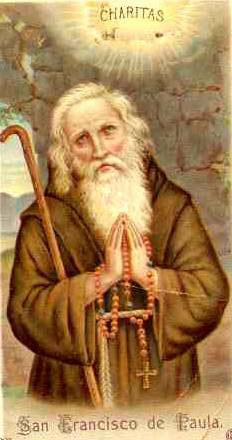 Dear readers, Catholic Online was de-platformed by Shopify for our pro-life beliefs. They shut down our Catholic Online, Catholic Online School, Prayer Candles, and Catholic Online Learning Resources essential faith tools serving over 1.4 million students and millions of families worldwide. Our founders, now in their 70's, just gave their entire life savings to protect this mission. But fewer than 2% of readers donate. If everyone gave just $5, the cost of a coffee, we could rebuild stronger and keep Catholic education free for all. Stand with us in faith. Thank you. Help Now >
Dear readers, Catholic Online was de-platformed by Shopify for our pro-life beliefs. They shut down our Catholic Online, Catholic Online School, Prayer Candles, and Catholic Online Learning Resources essential faith tools serving over 1.4 million students and millions of families worldwide. Our founders, now in their 70's, just gave their entire life savings to protect this mission. But fewer than 2% of readers donate. If everyone gave just $5, the cost of a coffee, we could rebuild stronger and keep Catholic education free for all. Stand with us in faith. Thank you. Help Now >
Feast of the Circumcision
FREE Catholic Classes
As Christ wished to fulfil the law and to show His descent according to the flesh from Abraham. He, though not bound by the law, was circumcised on the eighth day ( Luke 2:21 ), and received the sublime name expressive of His office, Jesus, i.e. Saviour. He was, as St. Paul says, "made under the law ", i.e. He submitted to the Mosaic Dispensation, "that he might redeem them who were under the law : that we might receive the adoption of sons" ( Galatians 4:4, 5 ). "The Christ, in order to fulfil all justice, was required to endure this humiliation, and bear in His body the stigma of the sins which He had taken upon Himself" ( Fouard, A Life of Jesus, tr., I, 54). The circumcision took place, not in the Temple, though painters sometimes so represent it, but in some private house, where the Holy Family had found a rather late hospitality. The public ceremony in the synagogue, which is now the usage, was introduced later. Christmas was celebrated on 25 December, even in the early centuries, at least by the Western Church, whence the date was soon adopted in the East also. (See CHRISTMAS). Saint Chrysostom credits the West with the tradition, and St. Augustine speaks of it as well and long established. Consequently the Circumcision fell on the first of January. In the ages of paganism, however, the solemnization of the feast was almost impossible, on account of the orgies connected with the Saturnalian festivities, which were celebrated at the same time. Even in our own day the secular features of the opening of the New Year interfere with the religious observance of the Circumcision, and tend to make a mere holiday of that which should have the sacred character of a Holy Day. St. Augustine points out the difference between the pagan and the Christian manner of celebrating the day: pagan feasting and excesses were to be expiated by Christian fasting and prayer (P. L., XXXVIII, 1024 sqq.; Serm. cxcvii, cxcviii). The Feast of the Circumcision was kept at an early date in the Gallican Rite, as is clearly indicated in a Council of Tours (567), in which he Mass of the Circumcision is prescribed (Con. Tur., II., can. xvii in Labbe, V, 857). The feast celebrated at Rome in the seventh century was not the Circumcision as such, but the octave of Christmas. The Gelasian Sacramentary gives the title "In Octabas Domini", and prohibits the faithful from idolatry and the profanities of the season (P. L., LXXIV, 1061). The earliest Byzantine calendars (eighth and ninth centuries) give for the first of January both the Circumcision and the anniversary of St. Basil. The Feast of the Circumcision was observed in Spain before the death of St. Isidore (636), for the "Regula Monachorum", X, reads: "For it hath pleased the Fathers to appoint a holy season from the day of the Lord's birth to the day of His Circumcision" (P.L., LXXXIII, 880). It seems, therefore, that the octave was more prominent in the early centuries, and the Circumcision later.
It is to be noted also that the Blessed Virgin Mary was not forgotten in the festivities of the holy season, and the Mass in her honour was sometimes said on this day. Today, also, while in both Missal and Breviary the feast bears the title "In Circumcisione Domini et Octav Nativitatis", the prayers have special reference to the Blessed Virgin, and in the Office, the responses and antiphons set forth her privileges and extol her wonderful prerogatives. The psalms for Vespers are those appointed for her feasts, and the antiphons and hymn of Lauds keep her constantly in view. As paganism passed away the religious festivities of the Circumcision became more conspicuous and solemn; yet, even in the tenth century, Atto, Bishop of Vercelli, rebuked those who profaned the holy season by pagan dances, songs, and the lighting of lamps (P.L. CXXXIV, 43). (See also NEW YEAR'S DAY.)
Join the Movement
When you sign up below, you don't just join an email list - you're joining an entire movement for Free world class Catholic education.

-

- Stations of the Cross
- Easter / Lent
- 5 Lenten Prayers
- Ash Wednesday
- Living Lent
- 7 Morning Prayers
- Mysteries of the Rosary
- Litany of the Bl. Virgin Mary
- Popular Saints
- Popular Prayers
- Female Saints
- Saint Feast Days by Month
- Pray the Rosary
Pope Francis’ April Prayer Intention: Using Technology to Strengthen Human Connections
Finding Peace Through Prayer in a World of Worry
Trump Administration Withholds Federal Grants from Planned Parenthood Over DEI and Civil Rights Concerns
Daily Catholic
 Daily Readings for Wednesday, April 02, 2025
Daily Readings for Wednesday, April 02, 2025 St. Francis of Paola: Saint of the Day for Wednesday, April 02, 2025
St. Francis of Paola: Saint of the Day for Wednesday, April 02, 2025 Prayer for God's Help in Daily Actions: Prayer of the Day for Friday, March 14, 2025
Prayer for God's Help in Daily Actions: Prayer of the Day for Friday, March 14, 2025 Daily Readings for Tuesday, April 01, 2025
Daily Readings for Tuesday, April 01, 2025 St. Hugh of Grenoble: Saint of the Day for Tuesday, April 01, 2025
St. Hugh of Grenoble: Saint of the Day for Tuesday, April 01, 2025- To Perceive Animals as God's Gifts: Prayer of the Day for Thursday, March 13, 2025
![]()
Copyright 2025 Catholic Online. All materials contained on this site, whether written, audible or visual are the exclusive property of Catholic Online and are protected under U.S. and International copyright laws, © Copyright 2025 Catholic Online. Any unauthorized use, without prior written consent of Catholic Online is strictly forbidden and prohibited.
Catholic Online is a Project of Your Catholic Voice Foundation, a Not-for-Profit Corporation. Your Catholic Voice Foundation has been granted a recognition of tax exemption under Section 501(c)(3) of the Internal Revenue Code. Federal Tax Identification Number: 81-0596847. Your gift is tax-deductible as allowed by law.


 Daily Readings for Wednesday, April 02, 2025
Daily Readings for Wednesday, April 02, 2025 St. Francis of Paola: Saint of the Day for Wednesday, April 02, 2025
St. Francis of Paola: Saint of the Day for Wednesday, April 02, 2025 Prayer for God's Help in Daily Actions: Prayer of the Day for Friday, March 14, 2025
Prayer for God's Help in Daily Actions: Prayer of the Day for Friday, March 14, 2025 St. Hugh of Grenoble: Saint of the Day for Tuesday, April 01, 2025
St. Hugh of Grenoble: Saint of the Day for Tuesday, April 01, 2025

